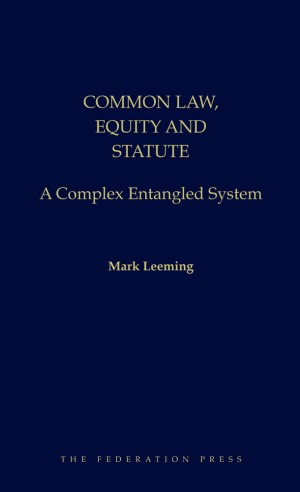
This strikingly original book explains how the Australian legal system is structured, and how that structure informs the way novel questions of law are argued and decided.
One of this book’s themes is that, in the minority of litigation which involves the determination of a question of law, it often makes sense to regard the legal system as an entangled product of statute and judge-made law, within which common law and equity are separate components. Another is that the actual workings of the legal system are far more complex than appears in most accounts, and within that complexity lies the scope for principled development. A third is that an appreciation of legal history will almost always assist in the resolution of novel questions of law, mostly by lightening the weight of precedent.
The book analyses what is meant by the “common law of Australia”, what is the relationship between judge-made law and statutes, and how courts resolve novel questions of law. It explains why some questions are best regarded as aspects of the common law, why others are best regarded as questions of statutory construction, why some are difficult to characterise, and why this matters. It also explains why equity continues to be a distinct component of judge-made law, with a different relationship with statute. And it gives a nuanced account of precedent and the role of authority from different jurisdictions. The ideas in some of the chapters are illustrated by dialogues between a teacher and students, replicating a once common form of legal literature, including St Germain’s Doctor and Student, published half a millennium ago.
Justice Mark Leeming has served as a Judge of Appeal of the Supreme Court of New South Wales since 2013, after practising at the New South Wales Bar since 1995 and as Senior Counsel from 2006. He has taught at the University of Sydney part-time since 1995, where he is Challis Lecturer in Equity.